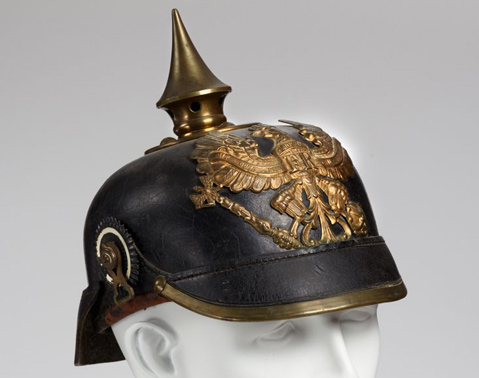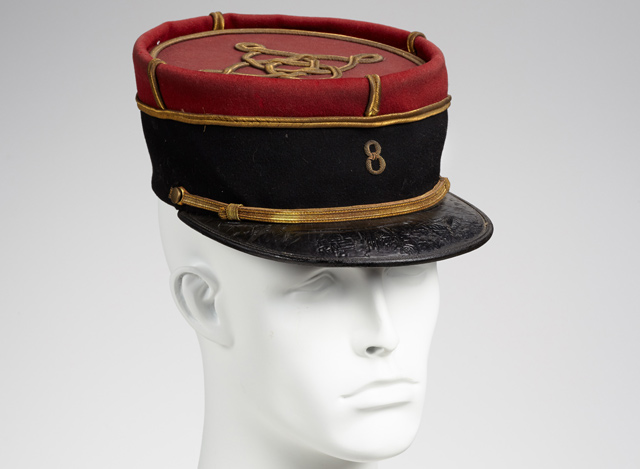UCSB Library Reveals History Through Helmets
Professor John Lee Explores World War I Via the Evolution of Headwear

At the start of World War I, combat took place on a battlefield through offensive warfare and bayonet charging. Yet by the end four years later, trench warfare had become synonymous with the Great War. These shifting military techniques are fully explored in an exhibit called Helmets of the First World War, now on display for free at the UCSB Library to coincide with the war’s 100th anniversary.
The exhibit is curated by John W.I. Lee, an associate professor of history who studies warfare from ancient to modern times. “I want people to understand what happened in WWI,” he explained. “It was a terrible war, and most people don’t really know about it. There are huge things that happened politically, socially, [including] the rise of the United States.”

His displays focus on the changing technology and what effects it had on the soldier experience. In 1914, people had a very romantic idea about wars. “They thought it would be very glorious, and uniforms and helmets reflected that,” he explained. German soldiers, for instance, had leather helmets with polished brass fittings and metal spikes at the crown. The French wore bright red trousers, gleaming metal breastplates, and headgear made of a lightweight silk cotton fabric.
But as bolt-action rifles, capable of firing 15 rounds a minute at ranges up to 2,000 feet, became common, soldiers began digging holes to hide from enemy fire — trench warfare was born, and with it, an increase in head injuries and shell shock. So steel helmets, some weighing upward of four pounds, were introduced in 1915. “It’s no longer this glorious war,” said Lee. “Now people are hiding in trenches. These objects are an attempt to tell the story of the short, glorious war that became a longer war with artillery, mass production, and bloody warfare.”

This exhibit is an attempt to understand that past. “Studying warfare is not a means of glorifying the military or war,” said Lee, “but an attempt to understand the human experience, and all citizens should know about the experiences of war.”
Helmets of the First World War: Battle, Technology, and Culture can be seen on the first floor of the UCSB Library in the Mountain Gallery. See library.ucsb.edu.



